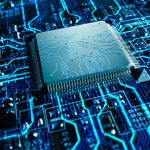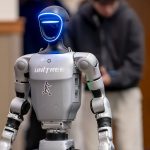From C Suite’s perspective, the technology teams are expected to deliver on three objectives:
- Business continuity – It is crucial that systems and applications stay up and performing so that the company delivers the service quality and service levels that customers expect.
- Customer satisfaction – No downtimes creates customer satisfaction with the services.
- Cost control – Stay within budget while delivering a reliable service.
Non-performing operations expose the enterprise to a number of risks:
- Customer defection to the competition.
- Damage to brand reputation.
- Operational cost overruns.
Traditionally the technology department has been reactive, fixing what’s broken. However, as the complexity of computing and network systems has increased, it is obvious that the model is no longer efficient. Thankfully there is a solution: the shift to self-healing enterprise. In this article,
Cuneyt Buyukbezci and Pranav Jha examine the state of an IT industry in flux, the opportunities enabled by self-healing systems and how transforming IT operations can be advantageous for every organisation.
Forces of Change
Changes inherent to widespread decentralisation and distribution are impacting businesses in many ways. That is why it is important that C-suite pays attention to the impact:
- Ubiquitous connectivity, cloud/edge computing and proliferation of application frameworks are decentralising and distributing “everything digital”.
- Modern tools and frameworks help developers create applications that are distributed.
- The cloud is creating new economies of scale for computing power. Workload Variety and Volume are Compounding at an Exponential Scale
The workload is anything digital, which could be an application or data, that is processed by IT infrastructure. In other words, data centres and cloud are in place to run workloads, process data, and run applications on them. Take, for example, an online shopping application on your phone where you pay from your wallet application. Each activity, including searching, comparing, adding to cart, and payment, creates multiple workloads that can be running on servers of the e-commerce business, the payment company, and also partly on your phone. In essence, one shopping experience, that may last less than a minute, create so many types of data and application processing on IT systems. Given this, it is easy to see how businesses with customer-facing applications are bound to process massive workloads. These are typically first-generation workloads that are usually transactional where business interacts with a consumer or a partner through a closed-loop process. The second-generation workloads shift toward user-generated content that often involves social media interaction via multiple channels. This type of interactivity at multiple touchpoints is open-loop processes that are generating a whole new set of workloads to manage within and outside of the organisation. We are now in the middle of a third-generation shift where machine-generated data drives the new wave.
This wave is growing at an exponential speed adding different types of loads that require a mix of open and closed-loop processing, therefore very different than transactional or multichannel interaction workloads. As a result, IT operations are struggling to keep up.
Consumers and businesses may enjoy the benefits that online applications, social media, and smart devices offer; however, handling the event data generated by IT and business systems efficiently is becoming increasingly difficult for IT operations.

New Age Decentralised Digital Ecosystems is Emerging
By necessity, modern infrastructure is all about handling distributed workloads. Devices, users, sensors, and systems are already generating orders of magnitude more data as compared to even just a decade ago. The desktop is out, and smartphones, which are now used far more often to access applications, are in. We will eventually see a rise in workloads that are closer to points of consumption. Going forward, enterprises will have to work with a combination of workloads on-premise, cloud, and edge. This setup will enable new revenue streams from digital transformation and cost arbitrage by shifting loads to the lowest cost computing environment.
In a multi-cloud world, the public cloud, private cloud, and edge will coexist together, and the application stack will spread across all three. Since micro-services and workloads will be processed together, it is essential to take a workload-centric view. Also, this workload-centric view should be holistic, covering each layer of the application and infrastructure at every deployment scenario, edge, on-premise, and public cloud.
While this blend of local and edge computing has some significant advantages, decentralisation is introducing multiple points of failure. That explains why enterprises are finding it increasingly difficult to detect, predict, and correct problems in their systems.
Generations of Architectures are Accumulating
Many legacy systems or client and server environments coexist with modern deployments based on microservices, new APIs, serverless environments, and so forth. All of this can lead to a lot of variabilities. One problem, for instance, is that as new architectures replace the old, the legacy systems tend to leave a footprint. For example, in many enterprises, the mainframe still powers core applications because it does not make economic sense to replace the entire legacy with new architectures.
Also, technology shifts happen in streams, and sometimes multiple waves overlap. Thus, architectural transformation is either disrupted or ends up being less effective as another technologic shift gets in the way. Consequently, the accumulation of multiple generations of architectures becomes challenging to manage for technology operations teams without the augmentation capabilities that AI can provide.
State of IT Operations Under Forces of Change
As digital transformation continues, the volume, variety, and complexity of workloads will only increase. So far, infrastructure has been keeping up with this change by becoming increasingly decentralised. That is the right solution; however, the increase in complexity that decentralisation entails can be challenging for the technology department. Visibility, manageability, governance, and control challenges all may arise. These factors can often limit the digital growth of an enterprise.
Also, automation and monitoring, two of the most critical technologies that technology operations teams rely on, can often become breaking points. The problem for technology operations is often a massive volume of events and alarms signalling problems in an everchanging variety of deployment points. Monitoring fails because it is insights-driven and restricts the operations team from getting ahead of the issues. Rule-based automation creates problems because it is rigid and cannot adapt to dynamic conditions.
In terms of visibility, CIOs and operations teams have too many tools in too many different places. Unfortunately, these tools sometimes provide entirely different views. In addition to the high levels of complexity and fragmentation, the monitoring tools are not capable of predicting workloads and system behaviour. That being the case, performance bottlenecks and downtime remain the top issues for digital enterprises.
As digital transformation continues, the volume, variety, and complexity of workloads will only increase.
The good news is that there have been several developments in diagnostic tools in the last couple of years. First-generation monitoring focused on network, infrastructure, database, and application. Wave two brought intelligence and insight based on big data. The third wave, which we refer to as AIOps or Cognitive Operations, has evolved in a myriad of ways. From metrics to logs to reporting to performance, there are numerous ways to check up on network and server health. These new tools can handle the increasingly complex APIs, interfaces, and external innovation and R&D that is being driven by outside partnerships and ecosystems.
Change is required; however, to tackle complex and dynamic processes, IT will have to shift from basic automation to autonomous operations. Also, there will need to be a shift from reactive to predictive diagnostics. That is where self-healing enterprise comes in. With self-healing, enterprises can break the linearity between headcount, scale, and performance by achieving a preventive approach to technology management.
Self-healing is Transformative for Enterprise IT
By “healing” problems before they ever happen, a self-healing system ensures maximum uptime. Self-healing enterprise has the ability to scan lead signals, discover possible problems with a high degree of precision, and then find the root cause. Once the cause is found, the problem can be remedied automatically so that all service disruptions are avoided. These features and more are only possible with highly autonomous, AI-powered operations software.
While some monitoring tools already have AI capabilities, it is important to note that fixing an existing problem is not true self-healing. A real self-healing system is one that fixes an issue before it can cause a system outage. Such preventative healing can be a massive benefit for Technology teams who end up spending less time on diagnostics and repair.
Those companies that use a self-healing system tend to have elevated customer experience as compared to the competition. Brand perception is improved as there are no outages: self-healing systems fix problems before they occur. A self-healing system can also elevate the online user experience by eliminating performance issues. Also, self-healing systems can reduce abandonment rates for pay-per-use services, banking, and e-commerce.
Finally, there are the advantages that self-healing systems offer in terms of resource optimisation and right-sizing. It is difficult to guess how business growth might affect capacity requirements. Most enterprises solve this problem by either the over-deployment of assets or cloud auto-scaling. These solutions, however, tend to be expensive and they don’t solve the issue, they mask it. AI, on the other hand, has true foresight capabilities, and it can help an enterprise to predict computing requirements and make the necessary adjustments to ensure near-perfect uptime.
Contact:
Cuneyt Buyukbezci, CMO
E: cuneyt.b@appnomic.com
Pranav Jha, COO
E: pranav.j@appnomic.com










